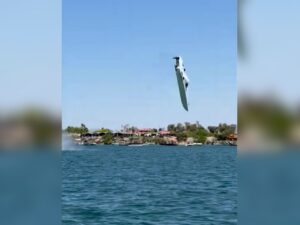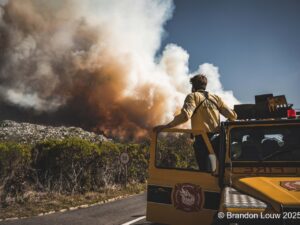Ethiopian Airlines recently made history for all the wrong reasons.
For the second time in less than five months, a brand new Boeing aircraft crashed just minutes into the flight.
The flight only lasted six minutes, during which time the pilots battled to regain control of the plane.
Bloomberg reports that “the alarms started sounding just seconds after Ethiopian Airlines Flight 302 took off on March 10 from Addis Ababa with 157 people on board”.
As speed and altitude readings started going haywire, a device known as a stick shaker activated on the left side of the cockpit, where the captain sits. The mechanism makes a loud noise and rattles a pilot’s control column to warn of an impending aerodynamic stall.

But the Boeing Co. 737 Max wasn’t about to stall. Instead, a computer was getting erroneous readings from a sensor mounted like a weather vane on the jet’s nose. The malfunction triggered an anti-stall feature that forced the plane into a dive — the same system that was implicated in a crash less than five months before in Indonesia that killed 189 people.
The pilots tried to counteract it with some of the steps suggested by the U.S. Federal Aviation Administration after the last crash, but made a critical oversight – they left the engines running on maximum.
“The thrust was full bore the whole way,” said Roger Cox, a former accident investigator at the National Transportation Safety Board, who flew earlier models of the 737 while working as an airline pilot. “That is extremely curious.”

Ethiopian Transport Minister Dagmawit Moges said in a press conference Thursday that the pilots followed proper procedures issued after the October crash of a Lion Air jet. She recommended that Boeing review its flight-control system. Aviation authorities should verify that the issues have been adequately addressed “before the release of the aircraft to operations,” she said.
The two disasters in five months have launched Boeing into one of the biggest crises in its century-long history. The Boeing 737 Max, a revamp of the plane that accounts for a third of Boeing’s operating profit, has been grounded worldwide.
Back to the recent crash:
The plane took off at 94 percent of full power, according to the report. That is normal for liftoff, but pilots then typically pull back the power soon afterward. Even though the captain called for setting the speed at 238 knots, or 274 miles per hour, about a minute after takeoff, the engine thrust remained at the same level for the entire short flight, according to the report.

Before it picked up speed in its final dive, the plane was flying as fast as 365 knots, or 420 miles an hour — almost twice the usual top speed at that low altitude. In addition to the multiple warnings prompted by the MCAS failure, the pilots were also getting audible alerts indicating they had exceeded the safe flying speed, according to the report.
In other words, there were a lot of contributing factors to the crash, but the safety of the Boeing 737 Max is still under investigation.
More on the crash report here.
[source:bloomberg]





